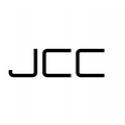
¿Confusos sobre la Fed?
por José Luis Martínez Campuzano Portavoz Asociación Española de Banca •Hace 11 años
•Hace 11 años
Página personal
Lacker: "si la economía sigue mejorando, hay argumentos claros para acelerar la reducción en las compras mensuales de deuda". Plosser: "me gustaría acelerar la reducción en la inyección de fondos; no hay muchos argumentos para defender que la economía norteamericana esté bajo un peligro permanente de recesión y crisis; la Fed es conscientes del papel distorsionador de los estímulos monetarios".
Aquí les dejó también las últimas conferencias desde Bernanke, su despedida, y Stein. Este último sobre el papel de la banca.
Once the economy improves sufficiently so that unconventional tools are no longer needed, the Committee will face issues of policy implementation and, ultimately, the design of the policy framework. Large-scale asset purchases have increased the size of our balance sheet and created substantial excess reserves in the banking system. Under the operating procedures used prior to the crisis, the presence of large quantities of excess reserves likely would have impeded the FOMC's ability to raise short-term nominal interest rates when appropriate. However, the Federal Reserve now has effective tools to normalize the stance of policy when conditions warrant, without reliance on asset sales. The interest rate on excess reserves can be raised, which will put upward pressure on short-term rates; in addition, the Federal Reserve will be able to employ other tools, such as fixed-rate overnight reverse repurchase agreements, term deposits, or term repurchase agreements, to drain bank reserves and tighten its control over money market rates if this proves necessary. As a result, at the appropriate time, the FOMC will be able to return to conducting monetary policy primarily through adjustments in the short-term policy rate. It is possible, however, that some specific aspects of the Federal Reserve's operating framework will change; the Committee will be considering this question in the future, taking into account what it learned from its experience with an expanded balance sheet and new tools for managing interest rates.
The creation of private money--that is, safe claims that are useful for transactions purposes--is obviously central to what banks do. But safe claims can be manufactured from risky collateral in different ways, and banks are not the only type of intermediary that engages in this activity. What makes banks unique is that they use a particular combination of financial and institutional arrangements--including capital, deposit insurance, and access to a lender of last resort--as well as substantial investments in bricks and mortar, to create liabilities that are not only safe and money-like, but also relatively stable and thus unlikely to run at the first sign of trouble. This is in contrast to shadow banks, who create money-like claims more cheaply, by relying on an early exit option, and who are therefore more vulnerable to runs and the accompanying fire-sale risk. I have argued that there is a synergy between banks' stable funding model and their investing in assets that have modest fundamental risk but whose prices can fall significantly below fundamental values in a bad state of the world. This synergy helps explain both why deposit-taking banks might have a comparative advantage at making information-intensive loans and, at the same time, why they tend to hold the specific types of securities that they do.
-
 OCEAN BOLSACHART GENERAL ALQUILER DE MAQUINARIA / GAM: PREPARADA TECNICAMENTE PARA NUEVO IMPULSO EN TENDENCIA ALCISTA5
OCEAN BOLSACHART GENERAL ALQUILER DE MAQUINARIA / GAM: PREPARADA TECNICAMENTE PARA NUEVO IMPULSO EN TENDENCIA ALCISTA5 -
 0
0 -
 0
0 -
 AlvaroBlog Sin artículos publicados0
AlvaroBlog Sin artículos publicados0 -
 0
0 -
 0
0 -
 0
0 -
 0
0
 4.00
4.00



